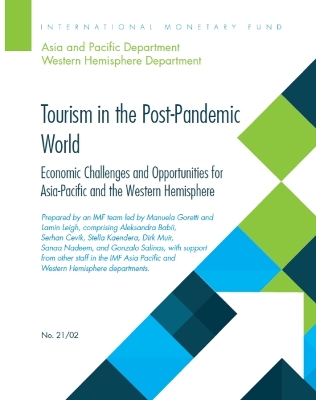Departmental Papers
3 total works
Is south Asia ready for take off?
by Manuela Goretti, Daisaku Kihara, Ranil M Salgado, and Anne-Marie Gulde
Published 30 November 2019
Since the mid-1980s, durable reforms coupled with prudent macroeconomic management have brought steady progress to the South Asia region, making it one of the world's fastest growing regions. Real GDP growth has steadily increased from an average of about 3 percent in the 1970s to 7 percent over the last decade. Although growth trajectories varied across countries, reforms supported strong per capita income growth in the region, lifting over 200 million people out of poverty in the last three decades. Today, South Asia accounts for one-fifth of the world's population and, thanks to India's increasing performance, contributes to over 15 percent of global growth. Looking ahead, the authors find that South Asia is poised to play an even bigger role in the global economy, in both relative and absolute terms. India has overtaken China as the fastest growing large economy and South Asia's contribution to global growth is set to increase, while more mature economies decelerate. Greater economic diversification, with an expansion of the service sector, improvements in education, and a still sizable demographic dividend are among the key elements underpinning this performance. Based on demographic trends, more than 150 million people in the region are expected to enter the labor market by 2030. This young and large workforce can be South Asia's strength, if supported by a successful high-quality and job-rich growth strategy. Amid a changing global economic landscape, the authors argue that South Asia will need to leverage on all sectors of the economy in a balanced way, supporting improvements in agricultural productivity and a sustainable expansion of manufacturing, while promoting higher-skill services, to achieve this goal
Tourism in the Post-Pandemic World
by Manuela Goretti, Lamin Y. Leigh, Aleksandra Babii, Serhan Cevik, Stella Kaendera, Dirk V. Muir, Sanaa Nadeem, and Gonzalo Salinas
Published 28 February 2022
This departmental paper analyzes the impact of the COVID-19 pandemic on tourism in the Asia Pacific region, Latin America, and Caribbean countries. Many tourism dependent economies in these regions, including small states in the Pacific and the Caribbean, entered the pandemic with limited fiscal space, inadequate external buffers, and foreign exchange revenues extremely concentrated in tourism. The empirical analysis leverages on an augmented gravity model to draw lessons from past epidemics and finds that the impact of infectious diseases on tourism flows is much greater in developing countries than in advanced economies.
Industrial Policy for Growth and Diversification
by Reda Cherif, Fuad Hasanov, Nikola Spatafora, Rahul Giri, Dimitre Milkov, Saad N Quayyum, Gonzalo Salinas, and Andrew M Warner
Published 30 November 2023
As countries strive for a strong recovery and to recoup the losses incurred during the COVID-19 pandemic, they need to map out a new path for development and high and sustained growth. Promoting diversification, developing new industrial capabilities, and designing the policies needed to achieve this goal should be a priority. A successful diversification strategy should tackle both broad policy failures, such as an unfavorable business environment and investment climate and sector-specific market failures. This departmental paper presents a conceptual framework to analyze industrial policy, defined as targeted sectoral interventions. The authors first discuss the key principles that should guide policymakers, that is, a focus on the market failures that could justify targeted sectoral interventions, as well as the potential government failures that can undermine these interventions. The authors then discuss some commonly employed policy tools, their rationale, and the associated pitfalls. Finally, the authors outline a stylized decision-making framework.

